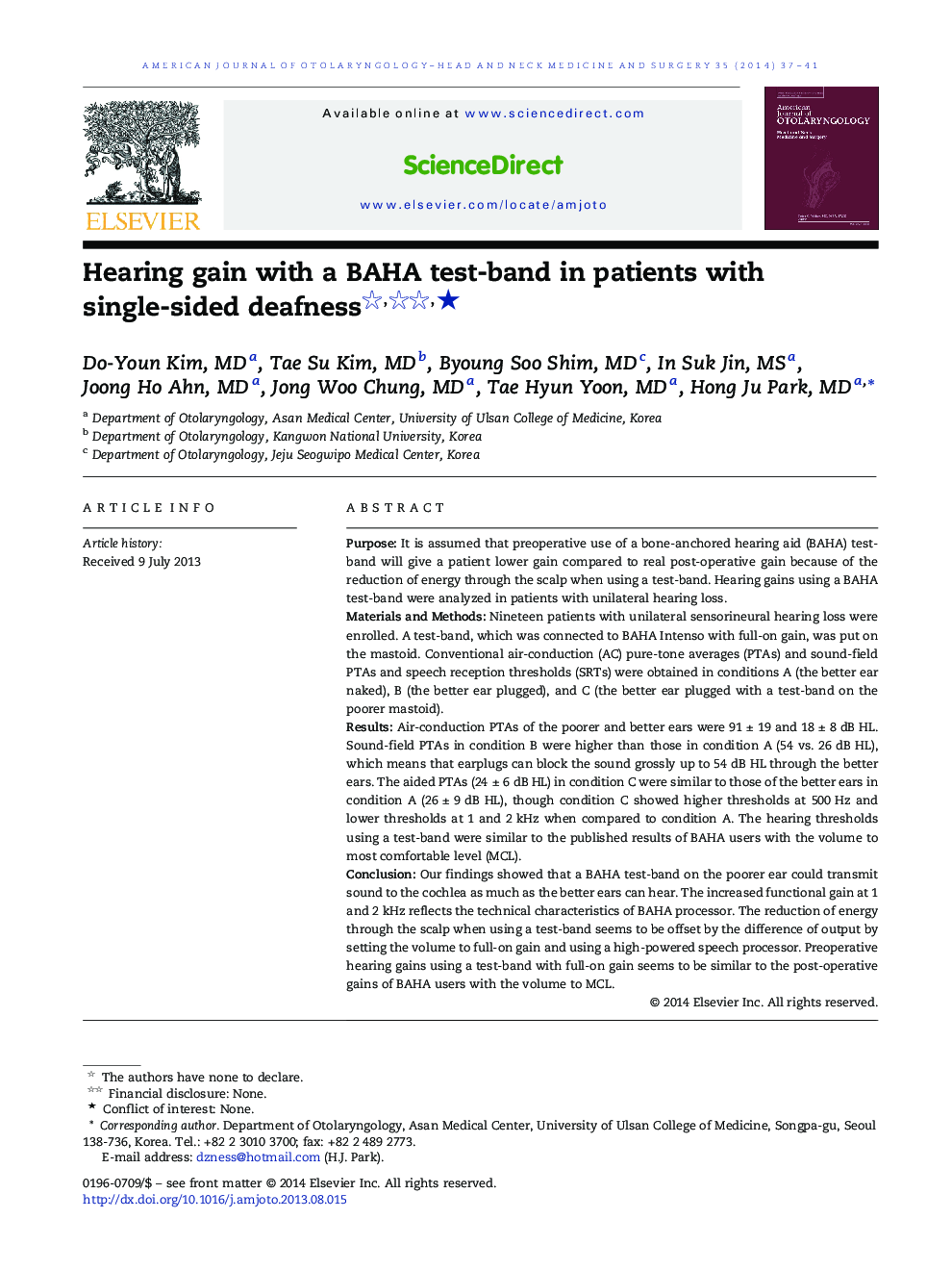| Article ID | Journal | Published Year | Pages | File Type |
|---|---|---|---|---|
| 4103695 | American Journal of Otolaryngology | 2014 | 5 Pages |
PurposeIt is assumed that preoperative use of a bone-anchored hearing aid (BAHA) test-band will give a patient lower gain compared to real post-operative gain because of the reduction of energy through the scalp when using a test-band. Hearing gains using a BAHA test-band were analyzed in patients with unilateral hearing loss.Materials and MethodsNineteen patients with unilateral sensorineural hearing loss were enrolled. A test-band, which was connected to BAHA Intenso with full-on gain, was put on the mastoid. Conventional air-conduction (AC) pure-tone averages (PTAs) and sound-field PTAs and speech reception thresholds (SRTs) were obtained in conditions A (the better ear naked), B (the better ear plugged), and C (the better ear plugged with a test-band on the poorer mastoid).ResultsAir-conduction PTAs of the poorer and better ears were 91 ± 19 and 18 ± 8 dB HL. Sound-field PTAs in condition B were higher than those in condition A (54 vs. 26 dB HL), which means that earplugs can block the sound grossly up to 54 dB HL through the better ears. The aided PTAs (24 ± 6 dB HL) in condition C were similar to those of the better ears in condition A (26 ± 9 dB HL), though condition C showed higher thresholds at 500 Hz and lower thresholds at 1 and 2 kHz when compared to condition A. The hearing thresholds using a test-band were similar to the published results of BAHA users with the volume to most comfortable level (MCL).ConclusionOur findings showed that a BAHA test-band on the poorer ear could transmit sound to the cochlea as much as the better ears can hear. The increased functional gain at 1 and 2 kHz reflects the technical characteristics of BAHA processor. The reduction of energy through the scalp when using a test-band seems to be offset by the difference of output by setting the volume to full-on gain and using a high-powered speech processor. Preoperative hearing gains using a test-band with full-on gain seems to be similar to the post-operative gains of BAHA users with the volume to MCL.
